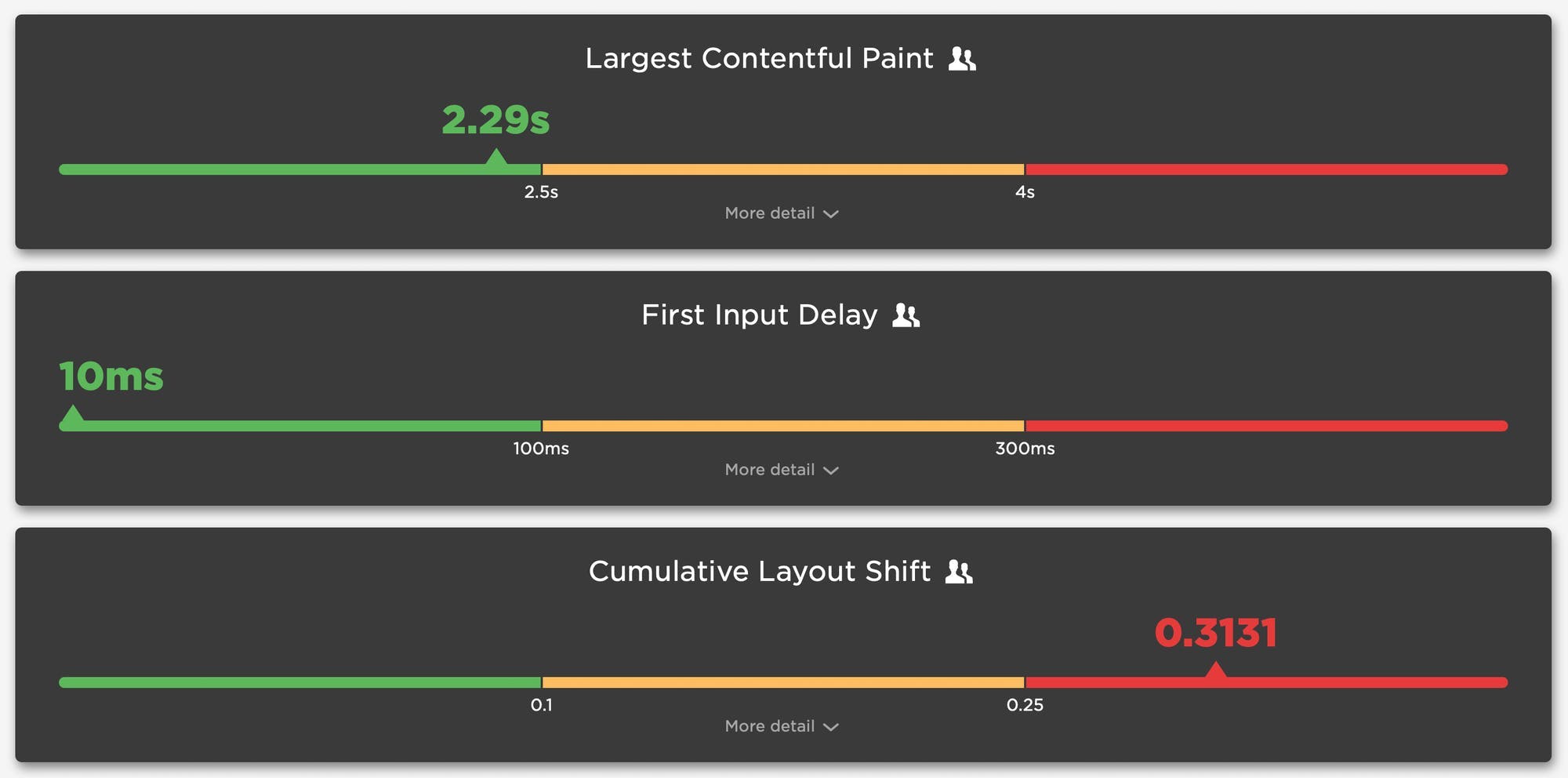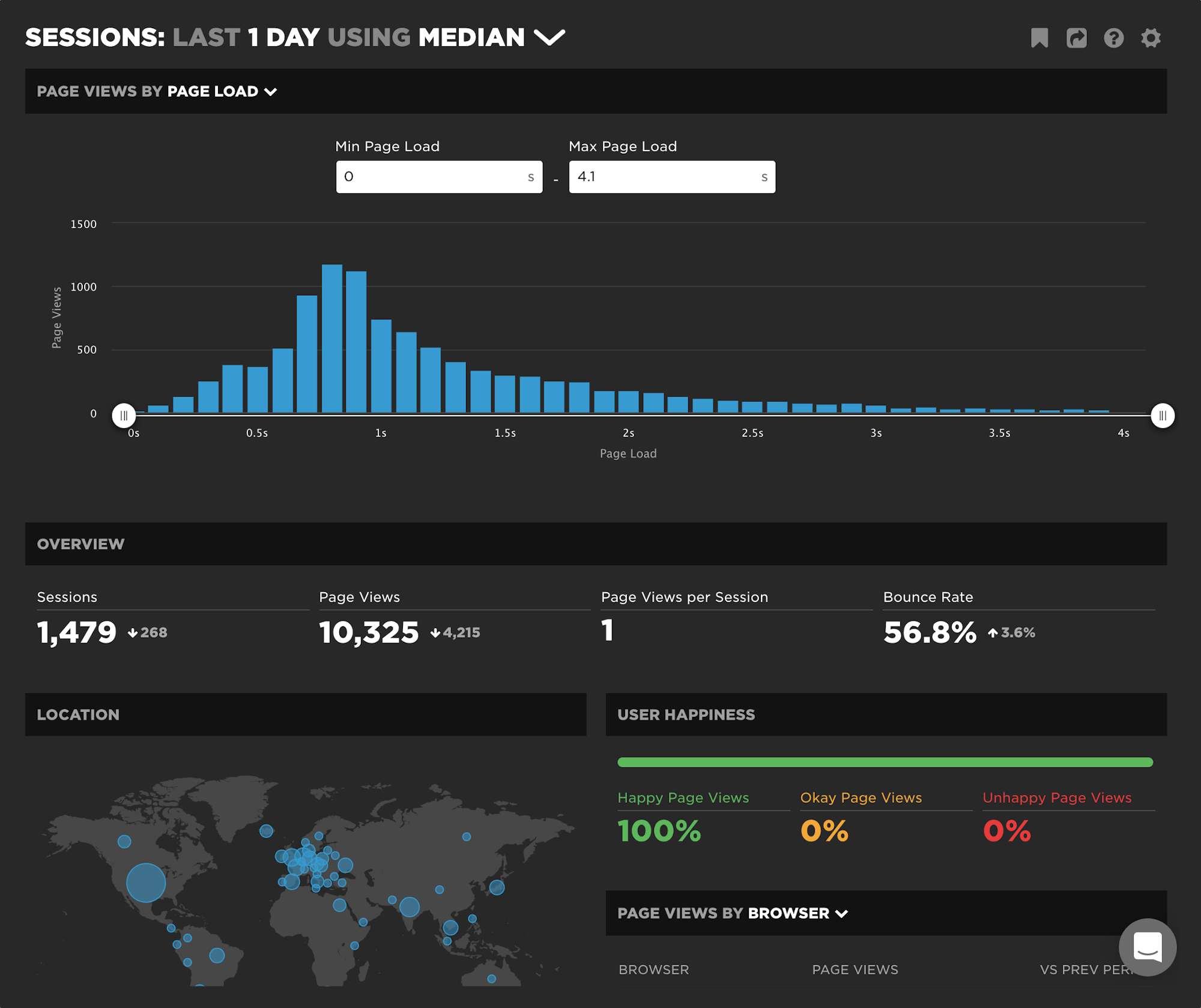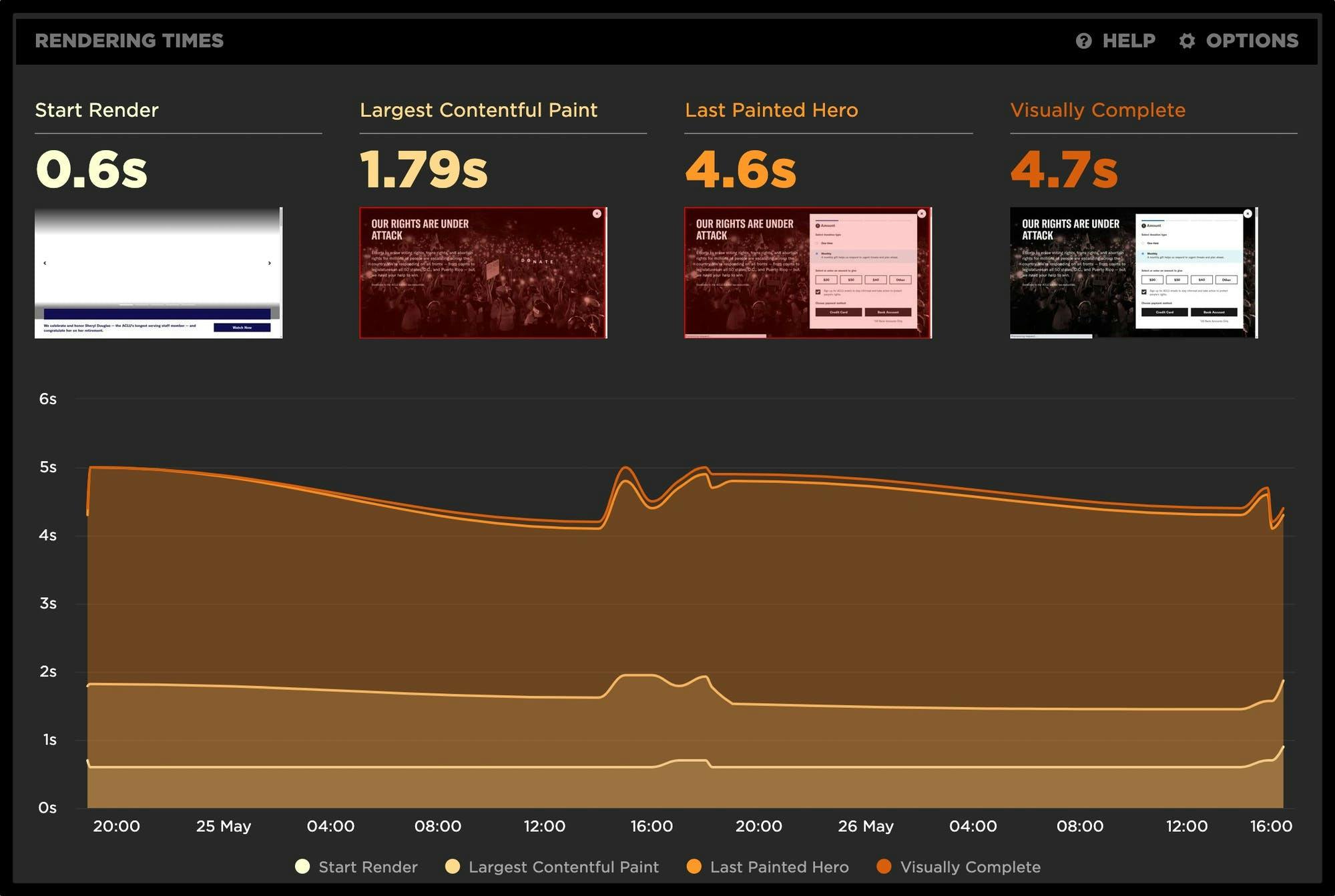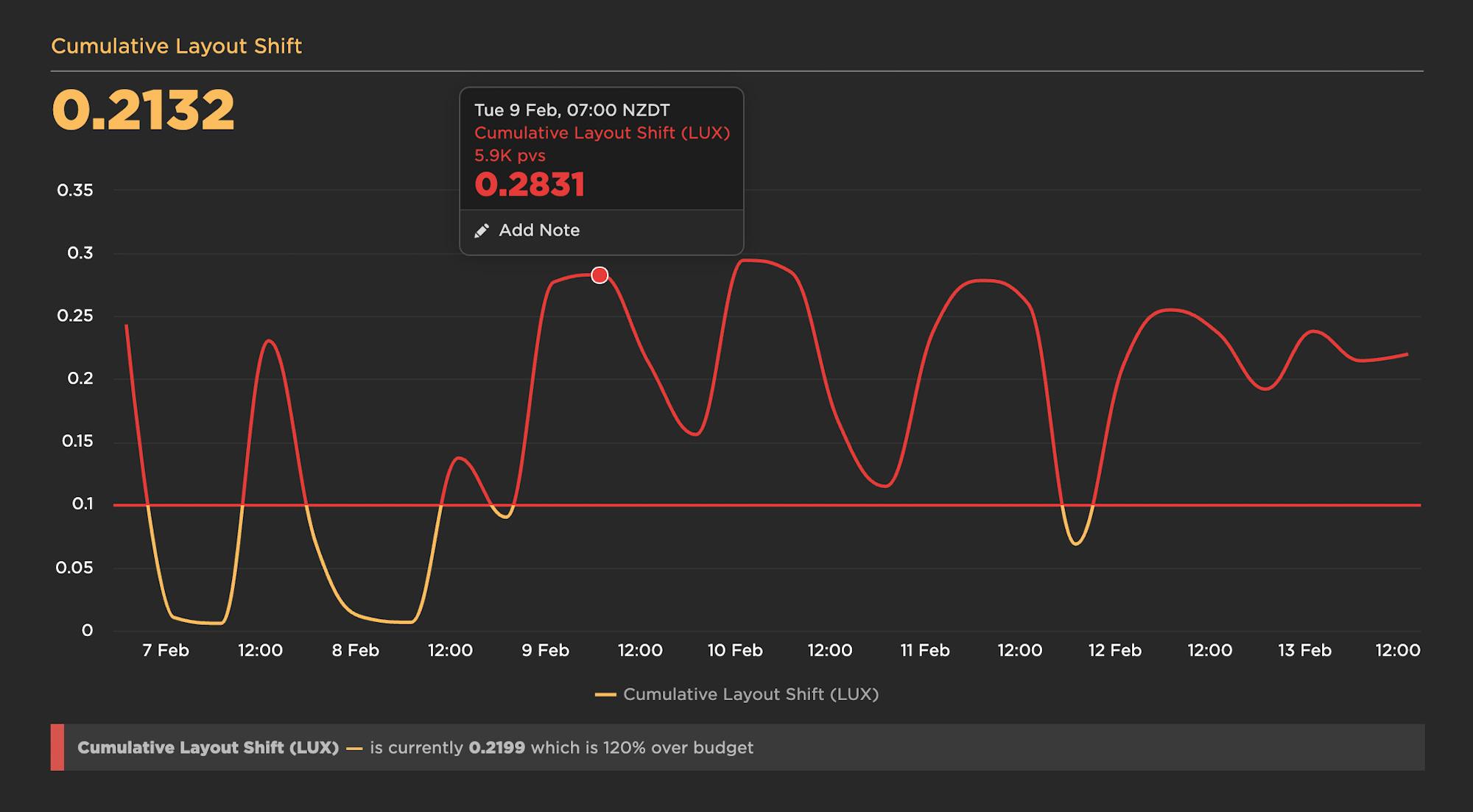SEO and web performance: What to measure and how to optimize
Chances are, you're here because of Google's update to its search algorithm, which affects both desktop and mobile, and which includes Core Web Vitals as a ranking factor. You may also be here because you've heard about the most recent potential candidates for addition to Core Web Vitals, which were just announced at Chrome Dev Summit.
A few things are clear:
- Core Web Vitals, as a premise, are here to stay for a while.
- The metrics that comprise Web Vitals are still evolving.
- These metrics will (I think) always be in a state of evolution. That's a good thing. We need to do our best to stay up to date – not just with which metrics to track, but also with what they measure and why they're important.
If you're new to Core Web Vitals, this is a Google initiative that was launched in early 2020. Web Vitals is (currently) a set of three metrics – Largest Contentful Paint, First Input Delay, and Cumulative Layout Shift – that are intended to measure the loading, interactivity, and visual stability of a page.

When Google talks, people listen. I talk with a lot of companies and I can attest that, since Web Vitals were announced, they've shot to the top of many people's list of things to care about. But Google's prioritization of page speed in search ranking isn't new, even for mobile. As far back as 2013, Google announced that pages that load slowly on mobile devices would be penalized in mobile search.
Keep reading to find out:
- How much does web performance matter when it comes to SEO?
- Which performance metrics should you focus on for SEO?
- What can you do to make your pages faster for SEO purposes?
- What are some of the common issues that can hurt your Web Vitals?
- How can you track performance for SEO?
New and improved Support Hub!
One of the things I love about SpeedCurve is our commitment to writing help documents that actually help. Every time we release a new feature, we make sure to give you an accompanying support doc – often written by the same team member who led the feature development. Luckily, we have great writers on our team, so our docs are exceptionally clear, concise, and easy to follow (if I do say so).
We just celebrated our eighth birthday – hooray! Eight years of building new features means eight years worth of support docs. That's a lot of docs! Earlier this year, we realized that we had well over a hundred articles in our support centre. Inevitably, some duplication had crept in and some dead wood had accumulated. So we decided to give our docs a complete overhaul. That meant editing, organizing, purging – we gave them the full KonMari treatment.
Our brand-new Support Hub is live! Here's a quick overview of what you can expect to find, including new goodies like our "Web Performance 101" guides, as well as recipes for completing common tasks and our improved and expanded API documentation.
NEW: Exploring RUM sessions
If you want to understand how people actually experience your site, you need to monitor real users. The data we get from real user monitoring (RUM) is extremely useful when trying to get a grasp on performance. Not only does it serve as the source of truth for your most important budgets and KPIs, it help us understand that performance is a broad distribution that encompasses many different cohorts of users.
While real user monitoring gives us the opportunity for unparalleled insight into user experience, the biggest challenge with RUM data is that there's so much of it. Navigating through all this data has typically been done by peeling back one layer of information at a time, and it often proves difficult to identify the root cause when we see a change:
"What happened here?"
"Did the last release cause a drop in performance?"
"How can I drill down from here to see what's going on?"
"Is the issue confined to a specific region? Browser? Page?"
Today we're excited to release a new capability – your RUM Sessions dashboard – which allows you to drill into a dataset and explore those sessions that occurred within a given span of time.

UPDATE: Bookmark and compare synthetic tests

One of the huge benefits of tracking web performance over time is the ability to see trends and compare metrics. Last year we added new functionality that makes it easy for you to bookmark and compare different synthetic tests in your test history. We recently added some additional enhancements to make comparing tests even easier.
With the 'Compare' feature, you can generate side-by-side comparisons that let you not only spot regressions, but easily identify what caused them:
- Compare the same page at different points in time
- Compare two versions of the same page – for example, one with ads and one without
- Understand which metrics got better or worse
- Identify which common requests got bigger/smaller or slower/faster
- Spot any new or unique requests – such as JavaScript and images – and see their impact on performance
Along the way, we've also made it much more intuitive for you to drill down into your detailed synthetic test results. Let's take a look...
NEW: Lighthouse v8 support!

After Google's announcement about Lighthouse 8 this past month, we have updated our test agents. We've gotten a lot of questions about what has changed and the impact on your performance metrics, so here's a summary.
Hello from Europe!

I’m delighted to be joining some of my favourite web performance people at SpeedCurve!
Who am I?
I’ve been a full-time web performance consultant for around nine years. For about half that time I worked freelance, and the other half for Site Confidence / NCC Group in the UK.
My journey into performance started in the late 1990s, while I was working for an elearning provider and discovering the challenges of delivering rich content over the internet. To overcome some of these challenges, we built our own Java-based player, complete with caching, content compression, and even bandwidth detection so it could switch between video, audio, and text versions of a course depending on network speed.
Ultimately the business didn’t survive the dotcom bust, but it lit a spark...
NEW! Chrome Beta and Canary support & LCP element highlighting

Phew! Between the fast-paced release cycle for Chrome and the rapid evolution of Core Web Vitals, the month of May has been a busy one here at SpeedCurve. With that, we are excited to bring you some new features and enhancements to help you stay focused and ahead of the game as we move into summer.
Read on to learn more about:
- Chrome Beta and Canary support
- Largest Contentful Paint (LCP) element highlighting
- Key rendering times
Web Performance for Product Managers
I love conversations about performance, and I'm fortunate enough to have them a lot. The audience varies. A lot of the time it’s a front-end developer or head of engineering, but more and more I’m finding myself in great conversations with product leaders. As great as these discussions can be, I often walk away feeling like there was a better way to streamline the conversation while still conveying my passion for bringing fellow PMs into the world of webperf. I hope this post can serve that purpose and cover a few of the fundamental areas of web performance that I’ve found to be most useful while honing the craft of product management.
So, whether you are a PM or not, if you're new to performance I've put together a few concepts and guidelines you can refer to in order to ramp up quickly. This post covers:
- What makes a page slow?
- How is performance measured?
- What do the different metrics mean?
- Understanding percentiles and how to use them
- How to communicate performance to different stakeholders
Let's get started...
Joining the SpeedCurve team
After all the twists and turns of 2020, the unprecedented year ended up with the pleasure of joining the SpeedCurve team and helping to build the tool trusted by so many brands around the world that are striving to improve their customer experience.
As a developer I've always been fascinated by the web and how it enriches people's lives, and now I am jumping into the very essence of it – how it renders, performs and behaves! Thanks to SpeedCurve for this opportunity, I am so excited to work along with the veterans of the web performance industry (and just plain talented people), as well as to be closer to the performance community.

An Opinionated Guide to Performance Budgets
Performance budgets are one of those ideas that everyone gets behind conceptually, but then are challenged to put into practice – and for very good reason. Web pages are unbelievably complex, and there are hundreds of different metrics available to track. If you're just getting started with performance budgets – or if you've been using them for a while and want to validate your work – this post is for you.
What is a performance budget?
A performance budget is a threshold that you apply to the metrics you care about the most. You can then configure your monitoring tools to send you alerts – or even break the build, if you're testing in your staging environment – when your budgets are violated.

Understanding the basic premise of performance budgets is pretty easy. The tricky part comes when you try to put them into practice. This is when you run into three important questions:
- Which metrics should you focus on?
- What should your budget thresholds be?
- How do you stay on top of your budgets?
Depending on whom you ask, you could get very different answers to these questions. Here are mine.




